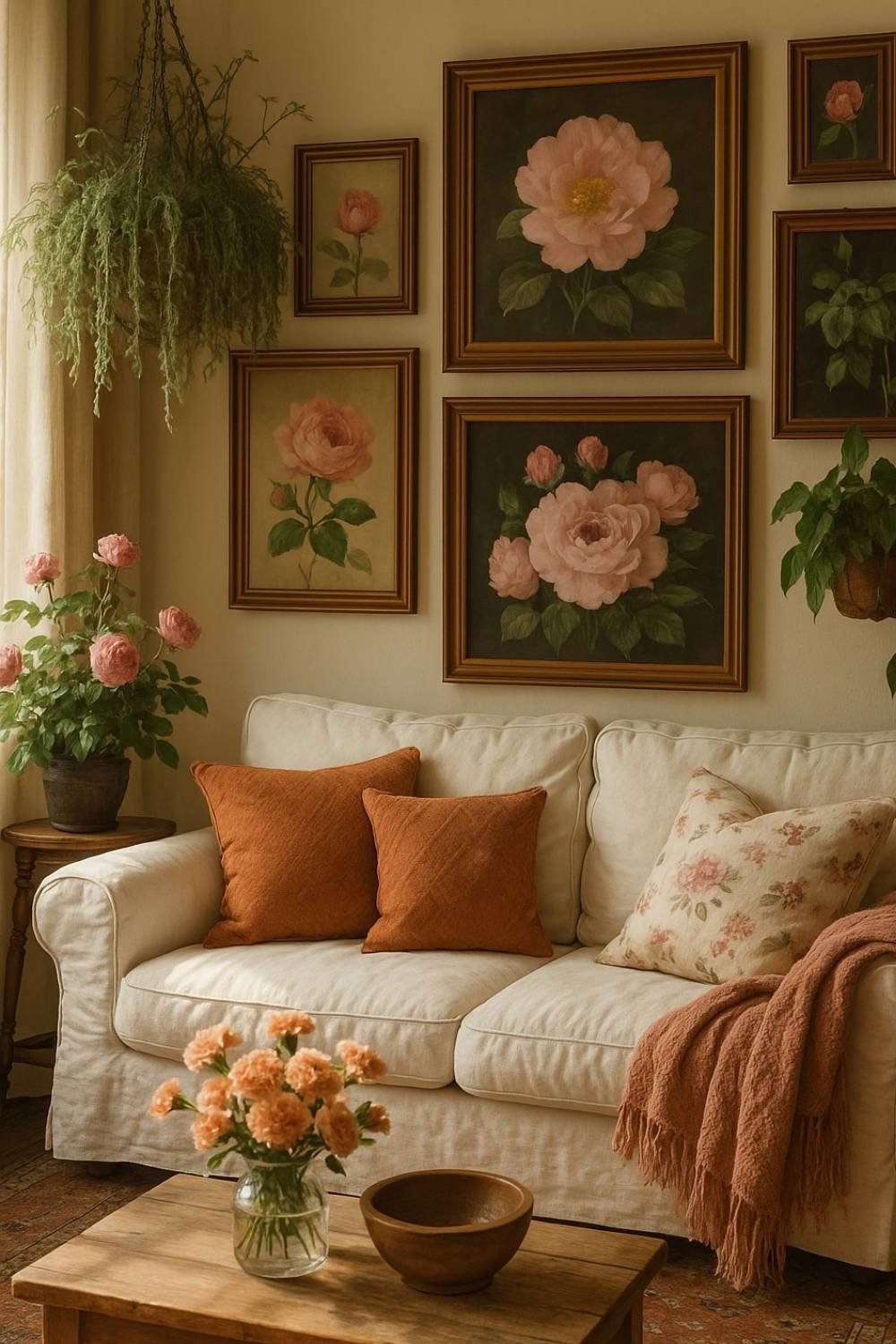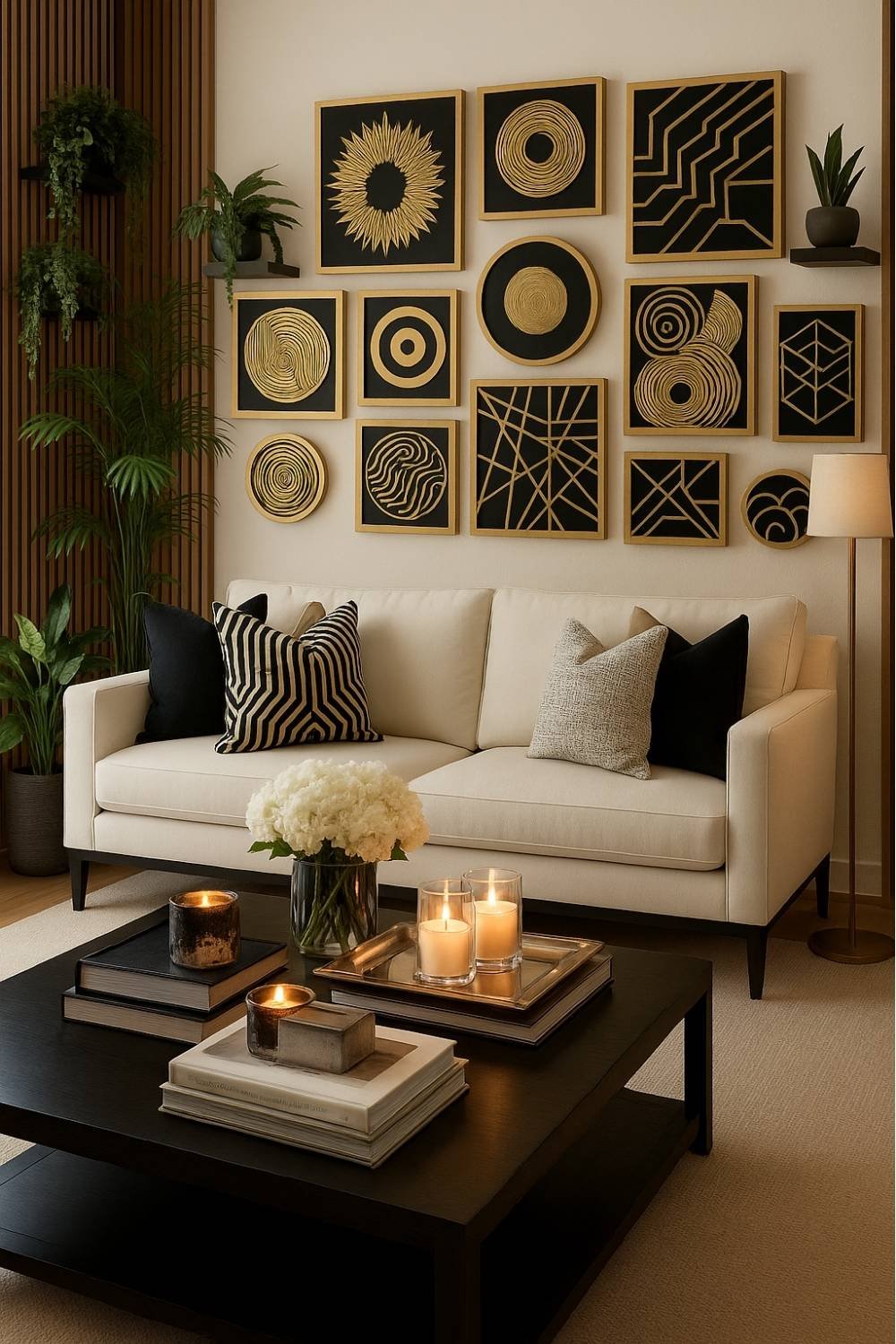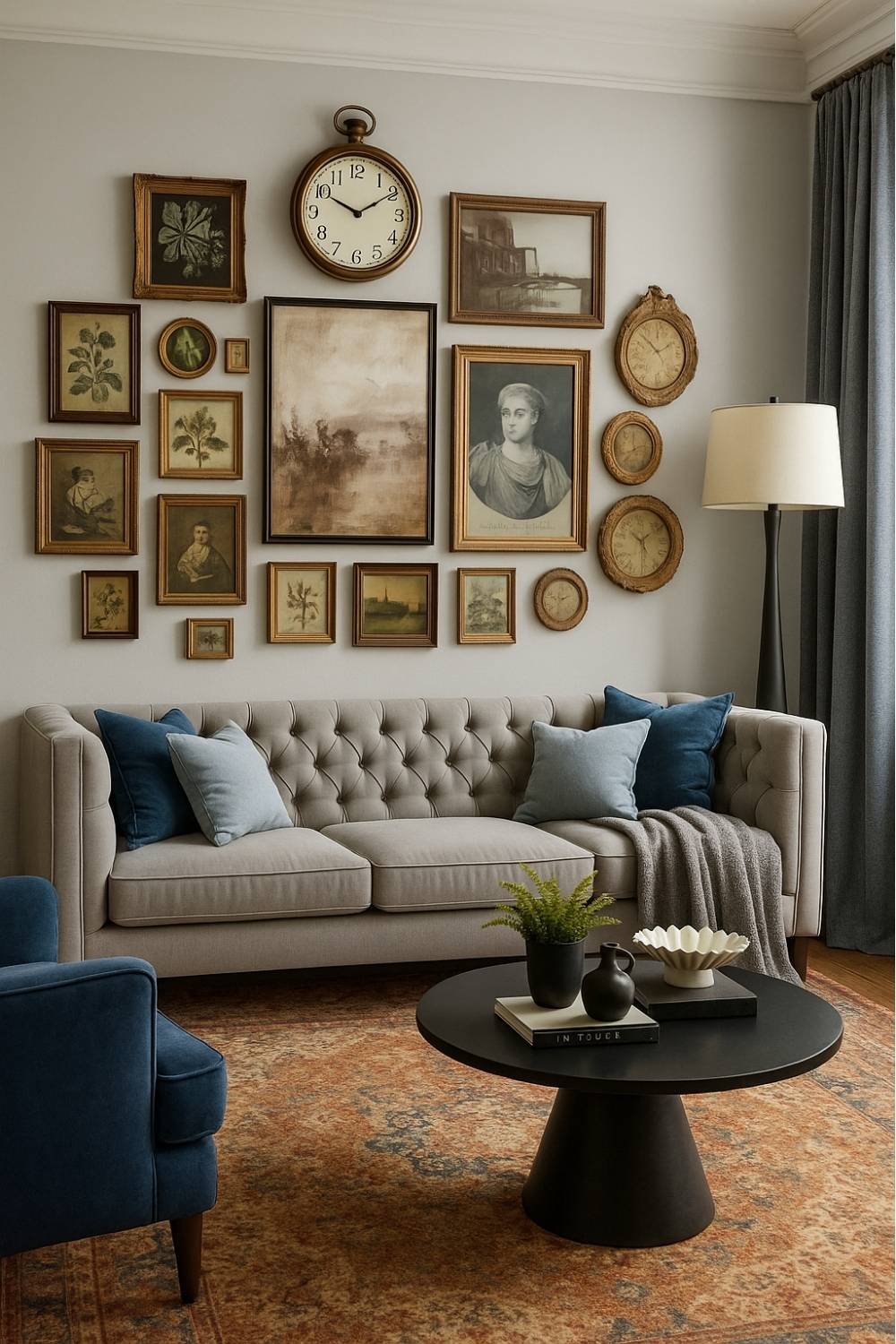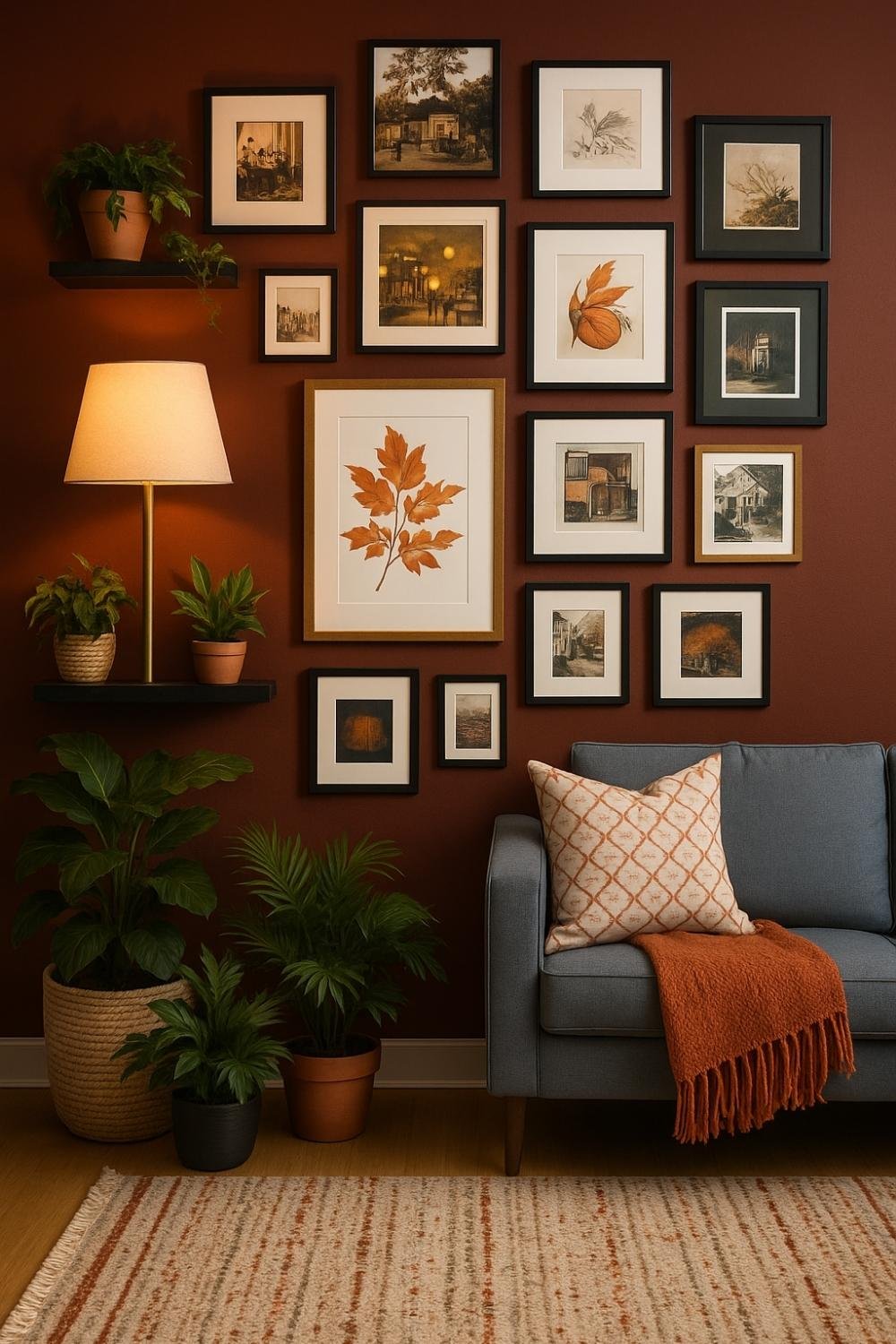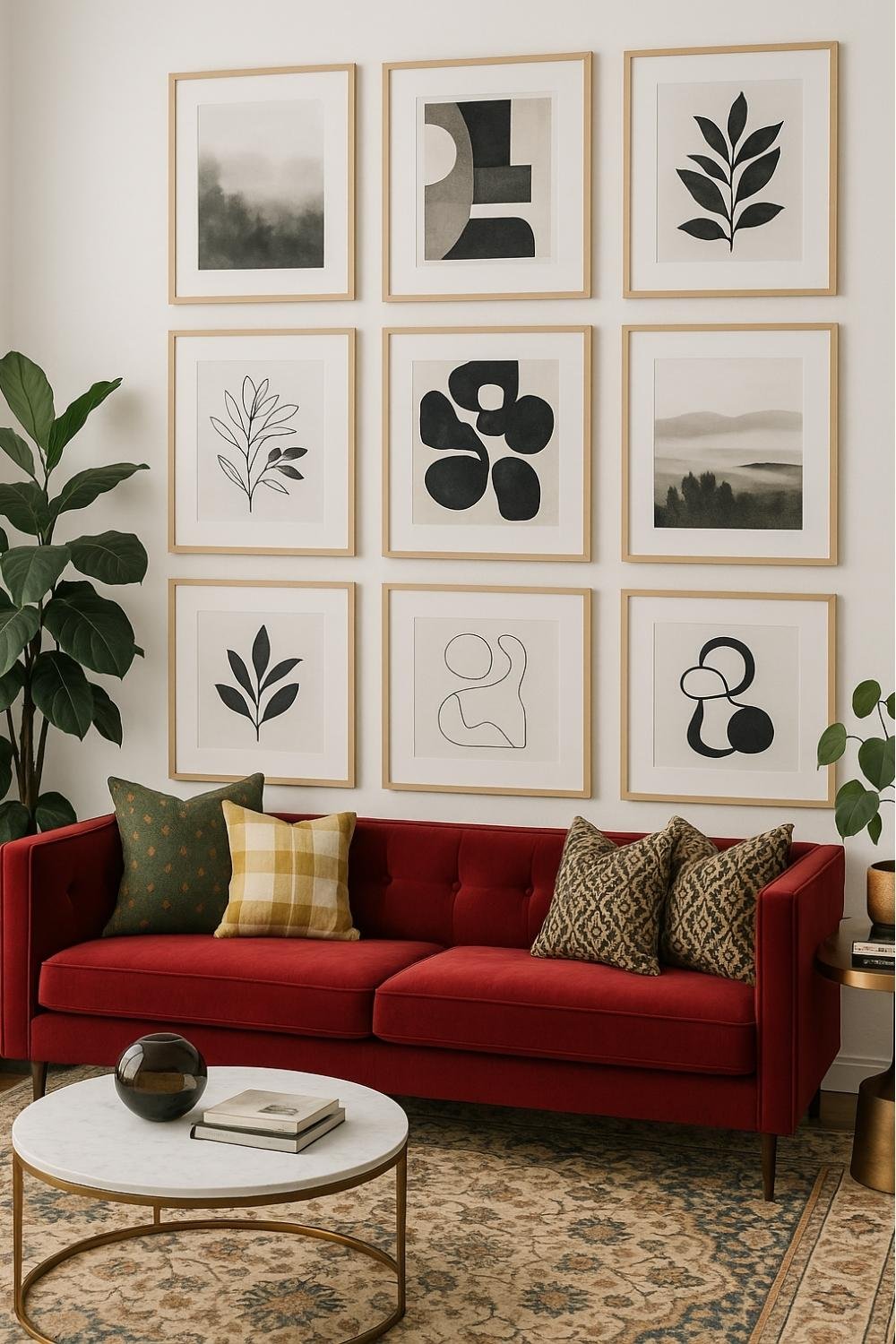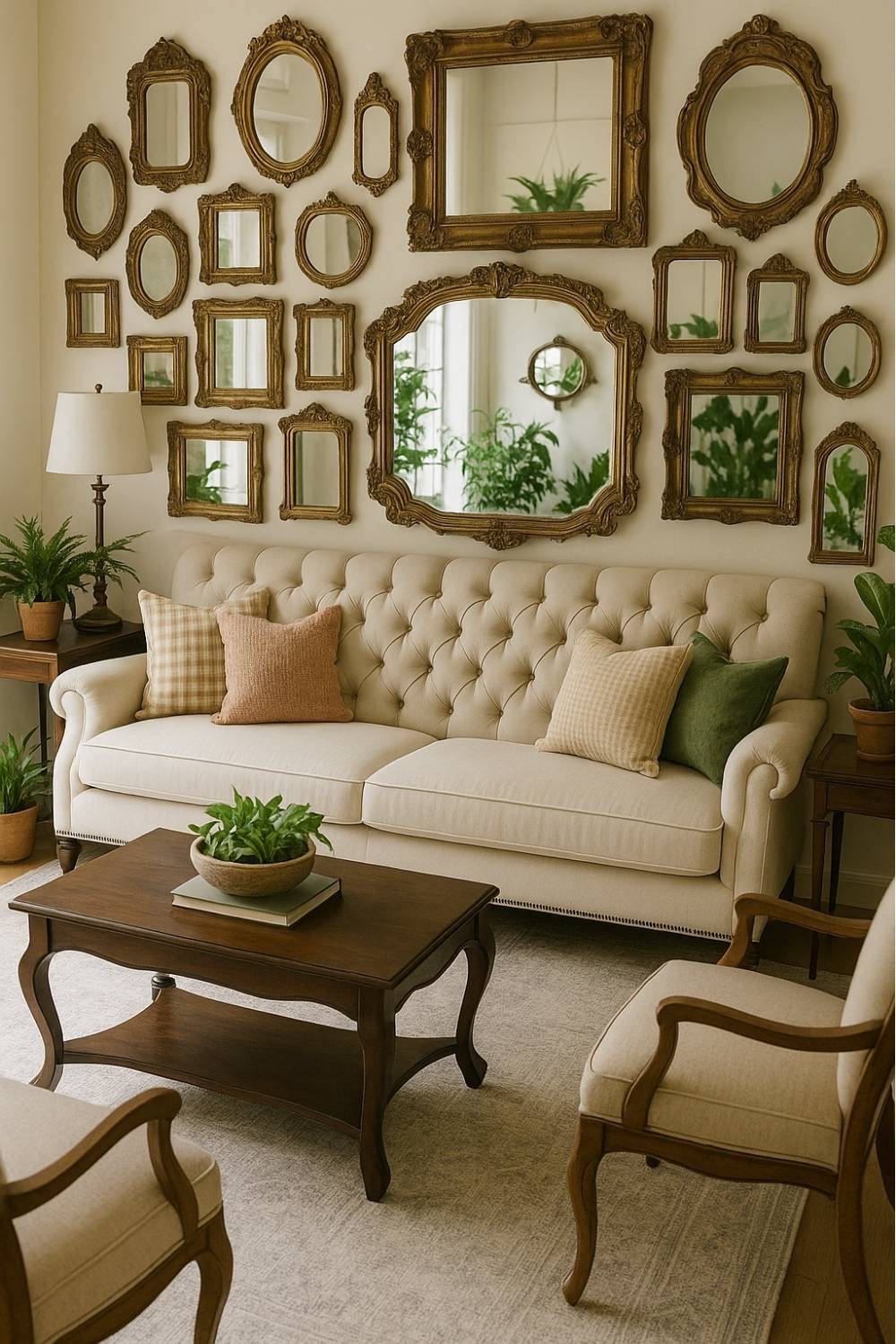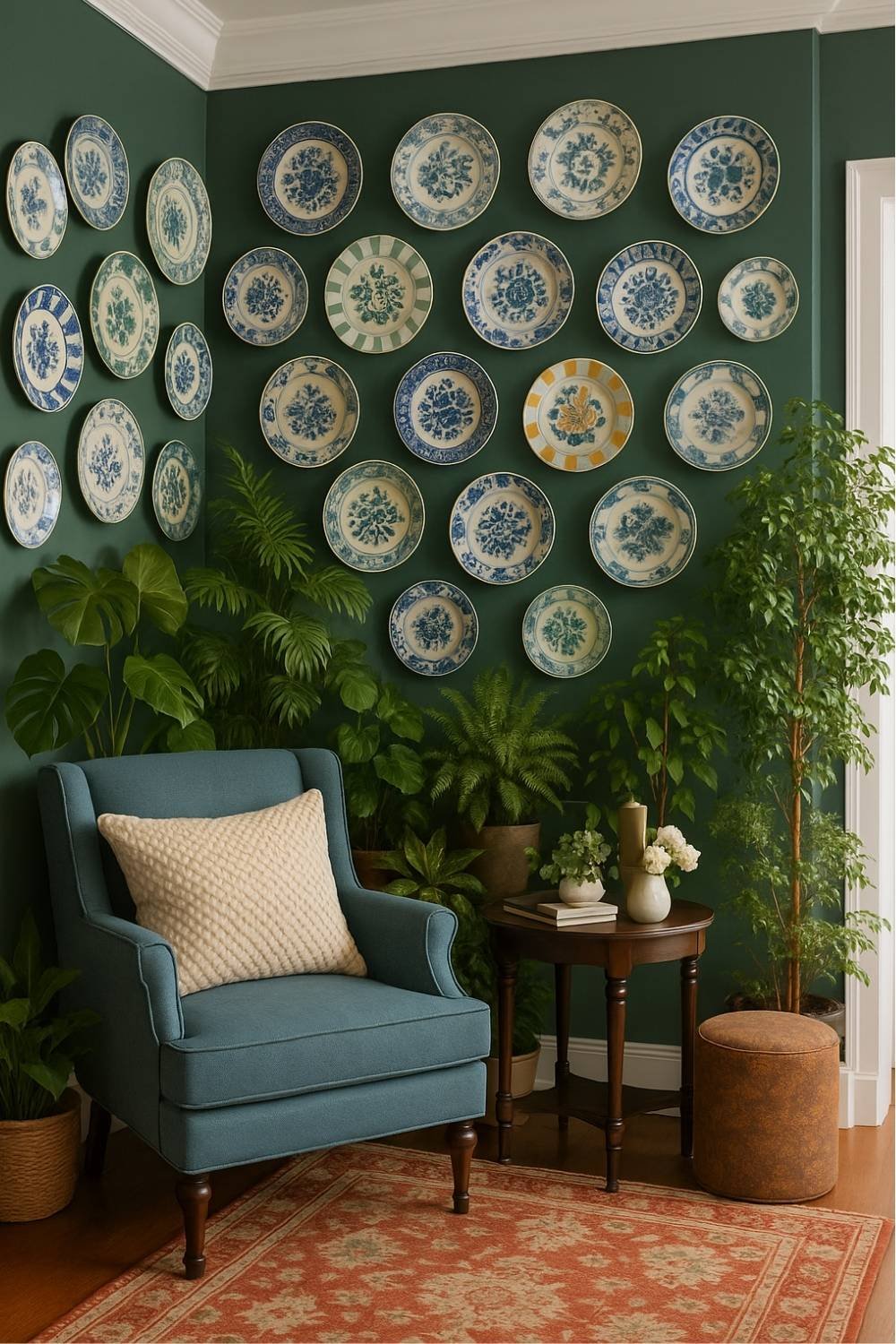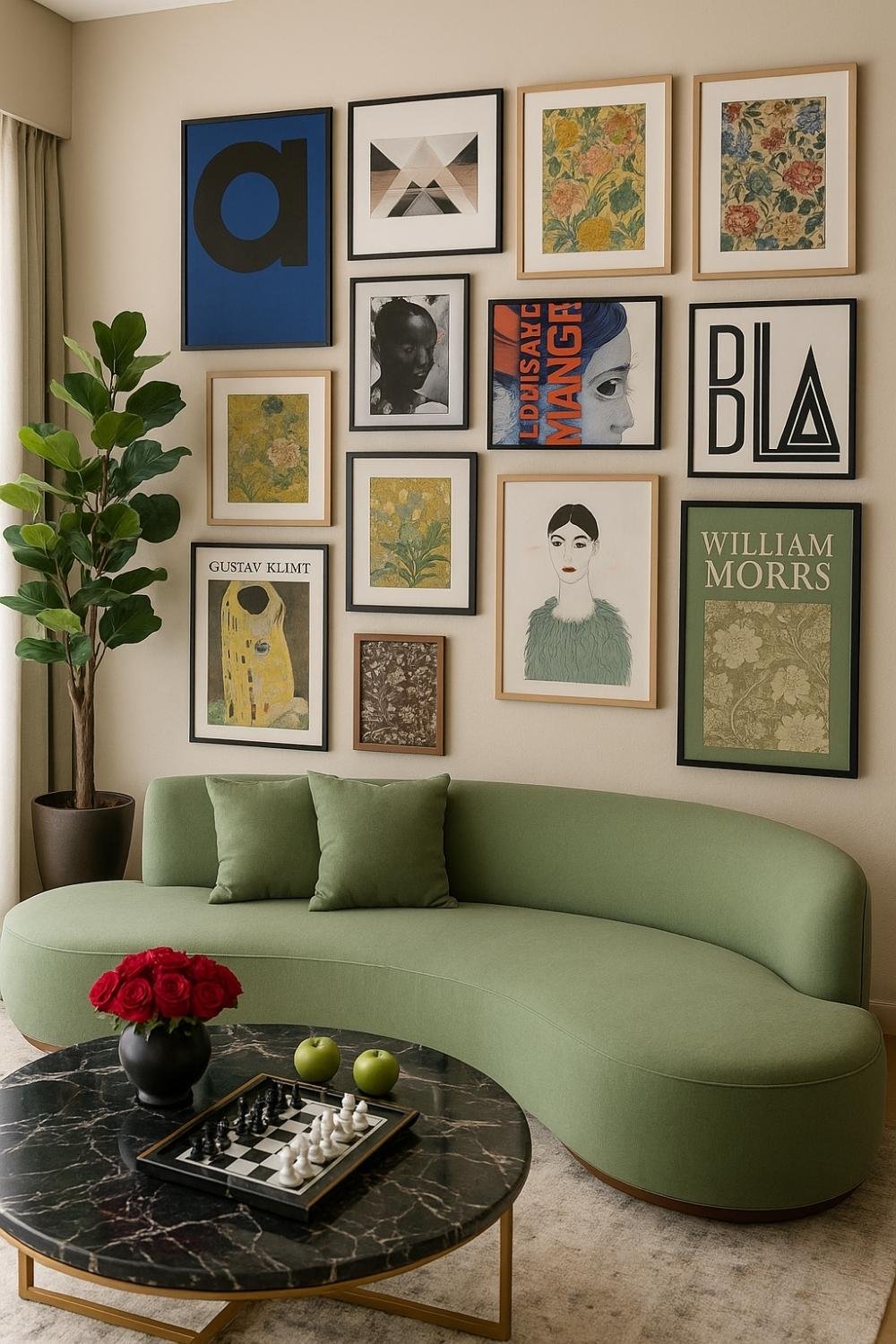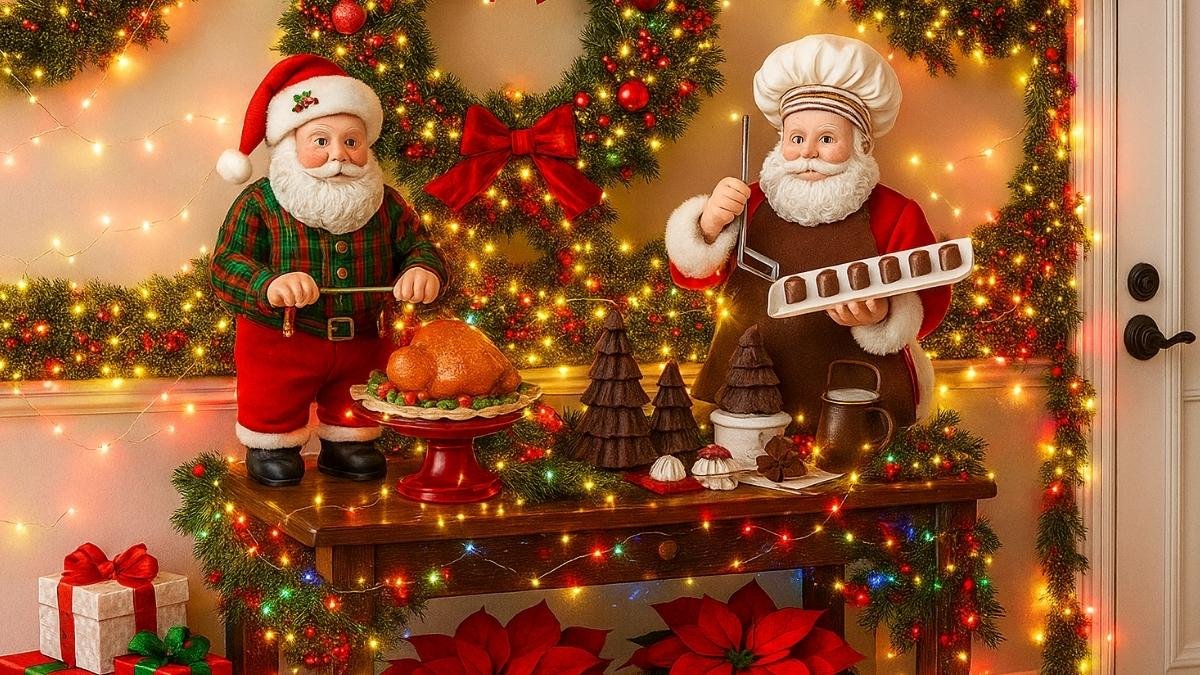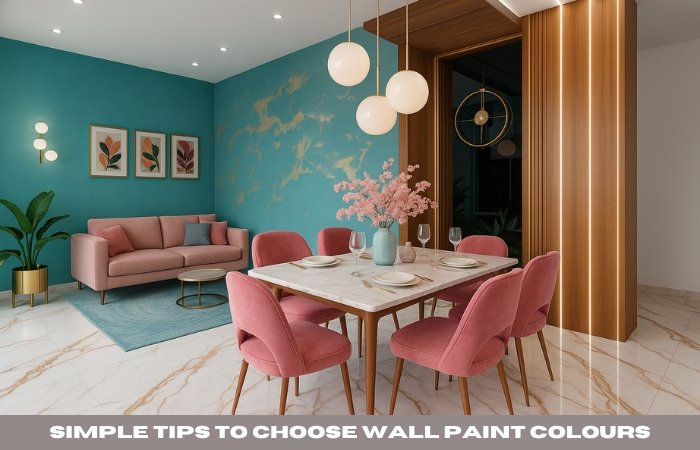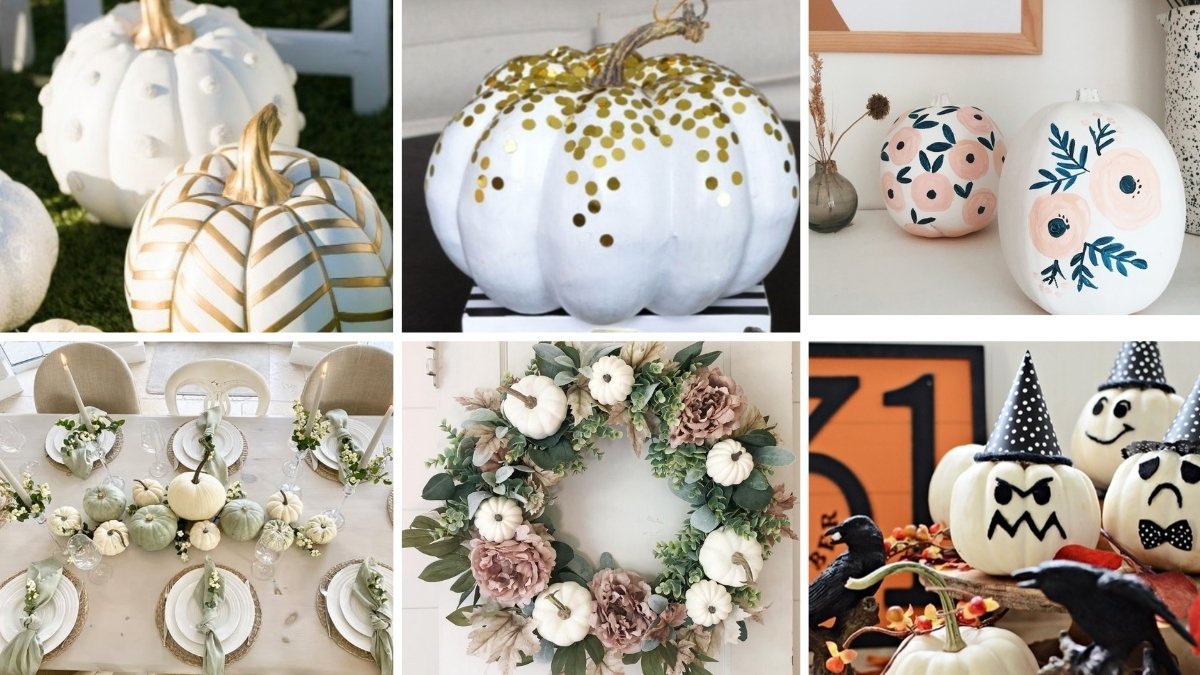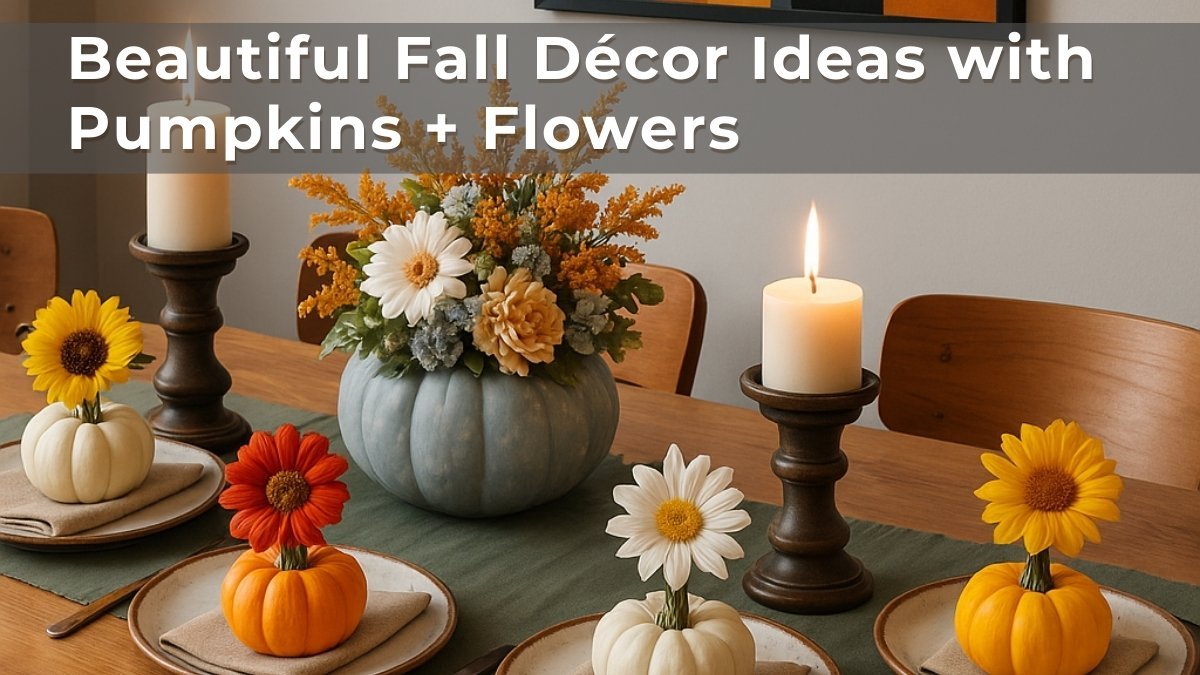When Emma moved into her new apartment, the walls felt empty—too plain, too impersonal. She wanted her home to feel like hers, a reflection of the moments and people she cherished most. One evening, as she scrolled through old photos on her phone, she had an idea: a photo wall. A space that would not only display her favourite pictures but also tell her story—of family vacations, friends’ laughter, and milestones worth celebrating. The result? A beautifully curated gallery wall that became the heart of her home.
If you, like Emma, want to transform a blank wall into a gallery wall of memories, here’s how to do it effortlessly.
Related Post:
- Black & White Checkerboard Flooring Ideas to Inspire You
- How to Create a Stunning Focal Point in Your Home Interior Design
- Don’t Miss Out- How to Add Character to Your Home
This post may contain affiliate links. If you click through and make a purchase, I may earn a small commission at no extra cost to you.
Effective Tips on How to Design a Gallery Wall for Any Space
To design a gallery wall like a pro, start by choosing a focal piece and build around it with frames of different sizes. Stick to a consistent color palette, maintain even spacing—usually 2 to 3 inches—and lay out your arrangement on the floor or using paper templates before hanging. Mix artwork, photos, and textures to add depth and personality. Let’s go in ore details.
1) Pick the Right Wall for Your Photo Display
The first step in designing a photo wall is choosing the right spot. Some great locations include:
✅ Living Room: A feature wall above the sofa or fireplace makes for a stunning focal point.
✅ Hallway: A long hallway can become a walking timeline of memories.
✅ Bedroom: A cozy, personal space to display moments that are uniquely yours.
✅ Staircase Wall: Perfect for a vertical arrangement that flows with the steps.
Pro Tip: Consider natural light—avoid walls with direct sunlight to prevent photo fading over time.
2) Choose a Theme or Style
Before printing and/or framing your photos, decide on a cohesive theme that suits your decor:
🎨 Black & White Elegance: Creates a sophisticated, timeless look.
🌿 Nature & Travel: Showcases adventure and landscapes.
📸 Mixed Memories: Combine family portraits, quotes, and art pieces for a dynamic feel.
🏡 Minimalist Grid: Perfect for a clean, modern aesthetic with uniform frames.
Pro Tip: A consistent colour scheme (all black frames, wood finishes, or mixed metallics) helps the wall feel intentional rather than random.
3) Consider the Wall Colour for a Cohesive Look
The background colour of your wall plays a big role in how your photo wall turns out. If you have a white or light-coloured wall, you have more flexibility—black frames, colourful prints, or a mix of both will stand out beautifully. On the other hand, if your wall is dark or bold-coloured, consider using lighter frames and artwork to create contrast, or go for a monochrome theme with gold or wooden frames for a sophisticated touch.
4) Select Your Pieces Thoughtfully
What you choose to hang on your gallery wall is entirely up to you. It could be a mix of family photos, art prints, travel souvenirs, or even children’s drawings. The key is to select pieces that resonate with you and reflect your style.
If you love a curated, cohesive look, stick to a single theme or colour palette—such as black-and-white photography, nature-inspired artwork, or vintage illustrations. For a more eclectic and dynamic display, mix different types of artwork, like paintings, photographs, and illustrations, to add variety and personality to your space.
Pro Tip: Choose photos that evoke emotions and memories. Mix close-up portraits with scenic shots for variety. When printing:
✔️ Opt for matte finishes to reduce glare.
✔️ Use high-resolution images for clarity and sharpness.
✔️ Consider mixing framed prints with canvas or metal prints for depth.
✔️If you want a casual, trendy look then Polaroid-style prints, or clip-hung photos can work beautifully.
5) Plan Your Layout Before Hanging
Arranging your photos before hammering nails into the wall is key. While there’s no fixed rule, and it ultimately comes down to your creativity and the items you want to display, here are some layout ideas to inspire you:
- 🖼️ Symmetrical Arrangement: Align frames in a grid or linear pattern for a balanced, classic look.
- 🎨 Asymmetrical Arrangement: Mix different frame sizes and shapes for a dynamic, eclectic feel.
- 📏 Grid Layout: Clean and symmetrical, ideal for modern interiors.
- 🖼️ Single Large Statement Piece: A big centrepiece with smaller supporting prints around it.
- 🖌️ Cohesive Artwork Display: Use pieces with a consistent theme or style for a unified and harmonious look.
- 🕰️ Mixing Art and Objects: Combine wall art with clocks, mirrors, or shelves for added texture and depth.
- 📍 Theme-Based Gallery: Focus on a single theme, like travel or family moments, to tell a visual story on your wall.
- ⚫⚪ Black and White on a White Background: Choose black frames with 2–3-inch white mats for a clean, modern aesthetic.
- 🎨 Kids’ Artwork Showcase: Display children’s drawings in colourful frames for a playful and personal touch.
- 🖼️ Modern Art Display: Highlight contemporary pieces in sleek, minimalist frames for a stylish, sophisticated vibe.
- 🛠️ Incorporate 3D Elements: Add sculptures, shadow boxes, or textured pieces for depth and dimension.
- 🖤 Uniform Frame Colour: Stick to one frame colour, like black, gold, or wood tones, for a polished and cohesive look.
- 📚 Layered Look: Slightly overlap frames for a casual, curated effect that feels effortlessly collected over time.
- 📖 Storytelling Layout: Arrange pieces chronologically or in a way that narrates a journey or experience.
- 🖼️ Mixed Mediums: Combine photography, paintings, and prints to create a diverse and engaging gallery.
- 📚 Floating Shelves Addition: Incorporate floating shelves to display small décor items, books, or framed pieces.
- 🔲 Symmetry with Variations: Maintain a symmetrical layout but vary the content within each frame for a fresh twist.
💡 Pro Tip: Before committing to nails or adhesive strips, lay out your frames on the floor in front of the wall where they’ll be hung. This lets you experiment with different arrangements and find the perfect balance. You can also use painter’s tape to outline the frames on the wall for a visual guide. Adjust placements until you’re happy with the composition—sometimes, a smaller piece works best in a cluster, or a standout photo belongs at the centre. Take your time and tweak until it feels just right!
6) Add Personal Touches & Layers
A great photo wall isn’t just about pictures—it’s about personality. Enhance your display with:
🌿 Greenery: Small hanging plants or eucalyptus branches for a fresh touch.
💡 String Lights: Fairy lights or LED strips for warmth and ambiance.
📜 Quotes & Typography Prints: Break up the visuals with inspiring words.
🔹 Mirrors or Decorative Pieces: Create depth and dimension.
💡 Pro Tip: Mixing textures and elements will make your photo wall feel curated rather than cluttered.
7) Use the Right Tools for a Seamless Finish
✅ Command Strips – Ideal for renters, no wall damage!
✅ Level & Measuring Tape – Ensures straight alignment.
✅ Picture Hanging Hooks & Nails – For a secure, permanent display.
✅ Floating Shelves – A versatile option for leaning frames instead of hanging them.
For large frames, use anchors to prevent accidents, especially in high-traffic areas.
I found this gallery wall hanger kit super useful for even spacing — you can check it out [here]
8) Refresh & Rotate Over Time
Your memories evolve—your photo wall should too! Your gallery wall doesn’t have to be completed all at once. In fact, I often encourage leaving some space for future additions. As you collect more memories or artwork, you can continue to add to your wall, making it an ever-evolving display of your life and style. Plus, swap out photos every few months to keep the display feeling fresh.
🔍 Frequently Asked Questions About Designing a Gallery Wall
A gallery wall is a curated collection of artwork, photographs, or decorative items arranged together on a wall to create a cohesive and visually appealing display. It’s a personal expression of style and can be tailored to fit any space.
The best way to create a gallery wall is by first choosing a focal point or anchor piece, then arranging smaller frames around it with consistent spacing. Use paper cutouts or painter’s tape to map out the layout on the wall before hanging.
There’s no fixed number—it truly depends on the wall space you’re working with. A good guideline is to fill around two-thirds of the wall width with your gallery. Whether you use 5 large frames or 12 small ones, focus on balance and spacing. The idea is to make it feel full, but not crowded.
Select art that feels personal—family photos, travel memories, meaningful quotes, or prints you love. To keep it cohesive, choose pieces that follow a color scheme, theme, or art style. Even a mix of black-and-white prints can create a calm, stylish look. Just remember: if it makes you smile every time you walk by, it’s the right choice.
Absolutely! Combining photographs, paintings, prints, and even three-dimensional objects can add depth and personality to your gallery wall. Ensure there’s a unifying element, such as a consistent color scheme or theme.
You can go with matching frames for a neat, uniform feel—or mix different frame styles for a more collected, lived-in charm. Whichever you choose, make sure the frame complements the art. Soft wooden, white, or black frames usually work well and keep the spotlight on the artwork itself.
Start with the largest or boldest frame in the center and arrange other pieces around it. Keep equal spacing—usually 2 to 3 inches between each frame. Use paper cutouts or painter’s tape to try out different layouts on the wall before committing. This little step can make a big difference in how polished the gallery feels.
Begin by hanging the central frame at eye level—about 57 to 60 inches from the floor. Work outward from there, following your planned layout. Use a level to keep everything straight, and make sure the spacing feels consistent. For lighter frames, adhesive strips can work well; for heavier ones, use proper hooks. Step back, adjust if needed, and enjoy your finished wall!
Gallery walls work beautifully in living rooms, hallways, staircases, and above furniture like sofas or beds. Choose a spot that naturally draws the eye.
Mixing frame styles can add interest, but for a harmonious look, consider using frames of similar colors or materials. For instance, combining black, white, and wooden frames can create a balanced aesthetic.
The ideal spacing between frames on a gallery wall is usually 2 to 3 inches. This keeps the arrangement looking balanced and intentional, without feeling too cluttered.
Aim to position the center of your gallery wall at eye level, approximately 57 to 60 inches from the floor. This standard helps create a comfortable viewing experience.
Grid Layout: Uniform frames arranged in rows and columns for a clean, modern look.
Salon Style: An eclectic mix of sizes and styles arranged organically.
Shelf Display: Artwork leaned against the wall on shelves, allowing for easy rotation.
Yes, you can create a gallery wall without nails using adhesive strips or picture-hanging hooks designed for damage-free hanging. They’re perfect for renters and easy to adjust.
Maintain consistent spacing between pieces and avoid overcrowding. Incorporate negative space to allow each piece to stand out.
Final Thoughts: Make Gallery Wall Uniquely Yours
A photo wall is more than decor—it’s a visual story of your life, your loves, and your adventures. So, there’s no right or wrong way to do this—it’s all about what feels right to you. Whether you choose a sleek modern look, a cozy family gallery, or a fun boho mix, the key is to make it personal. Start curating your memories today and turn your wall into a masterpiece!



